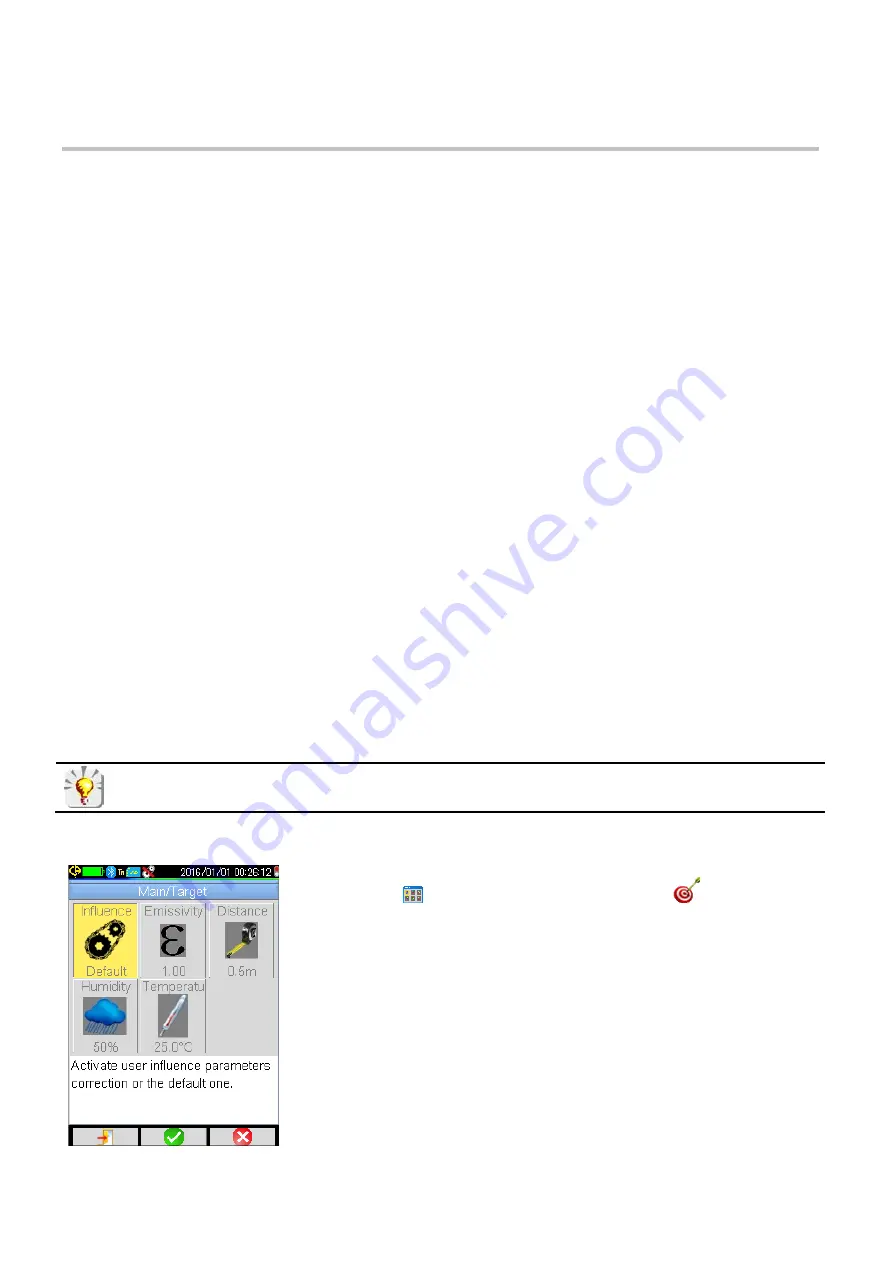
3. ADVANCED OPERATION WITH MORE PRECISE
MEASUREMENTS
3.1. Best Practices
Make the measurement in the central zone of the screen.
Aim straight on, not at an angle.
Measure targets that are as large as possible. Avoid point-like targets.
If the ambient temperature changes significantly, allow the camera to stabilize.
If batteries have warmed up during charging, wait for them to cool down to ambient before putting them
back in the camera.
3.2. Compensating for Influencing Parameters
Measurements can be influenced by:
emissivity
of the target object
temperature
of the environment
distance
to the target
relative humidity
of the air
Emissivity is the most crucial factor. This defines the efficiency with which a material radiates infrared energy.
Different materials have different emissivity values. A perfect “blackbody” has an emissivity of 1.00 (the
theoretical maximum), while a material that emits no infrared energy has an emissivity of 0.00. Black electrical
tape has an emissivity of 0.95 and is suitable as a reference target.
The higher the relative humidity and the greater the distance, the larger the effect relative humidity has on the
measurement.
The relative humidity, ambient temperature, and distance are likely to vary more significantly outdoors.
The camera default settings may not be suitable for the present environmental factors, resulting in possible
measurement errors. In these situations, we recommend adjusting the camera settings to compensate for these
factors. These are set through the Target menu (see below).
Incorrect settings can produce results less accurate than results obtained with the default
settings.
3.2.1. Default Compensation Settings
Compensation settings are managed through the Target menu. To display this
menu, press
F1
in the Main screen and select Target
.
The Target menu (shown to the left) lists default compensation settings for
target emissivity and distance, as well as for ambient humidity and
temperature.
You can use default settings for applications where high precision
measurements are not required, such as detecting a thermal bridge or
temperature difference.
17
Summary of Contents for 2121.40
Page 1: ...Model 1950 ENGLISH User Manual THERMAL CAMERA...
Page 2: ...2...
Page 35: ...APPENDIX A MENU TREE Display Files and Setup Menus 35...
Page 36: ...Target Parameters and About Menus 36...
Page 37: ...Recall Menus 37...
Page 42: ...NOTES 42...
Page 43: ...NOTES 43...
















































